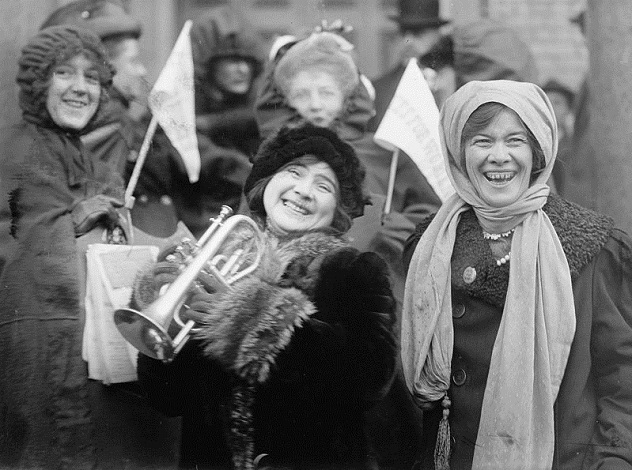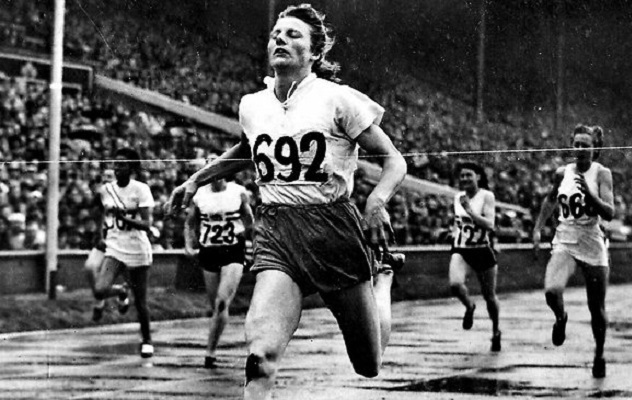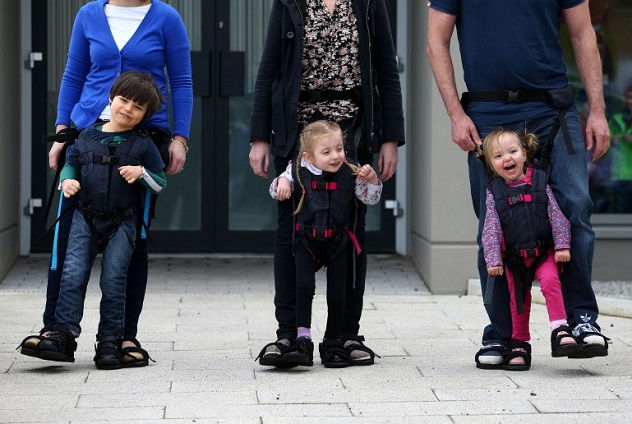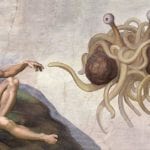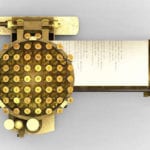10Pharabe ‘Febb’ Burn
In August 1920, Febb Burn—a mother of four who managed a farm in Mouse Creek, Tennessee—was thinking about local politics. Her 24-year-old son, Harry, was a representative in the Tennessee General Assembly, and he was about to vote on the 19th Amendment. If Tennessee ratified the 19th Amendment, women would be granted the legal right to vote. If Tennessee vetoed the amendment, as several states already had, women might have to wait years before the issue could be brought up again. Febb knew that Tennessee’s state senators would probably vote for ratification, but the vote in the House would be close. She sat down on her porch and wrote Harry a sweet, motherly letter about the goings-on at home, but she also admonished him to “be a good boy” and vote for suffrage. On August 18, 1920, Harry had his mama’s letter in his pocket when he surprised the legislature by voting “aye” on ratification. The vote had been split, but Harry broke the tie, and suffragettes shouted for joy as the 19th Amendment passed. The opposition was furious, but Harry simply told them that “a mother’s advice is always safest for a boy to follow, and my mother wanted me to vote for ratification.” Years later, he explained that the fact that his well-read, thoughtful mother couldn’t cast a vote while drunk, illiterate men could was a great injustice.
9Eliza Louise Baker Van Lew
Presiding over her mansion on Church Hill in Richmond, Virginia, the widowed Eliza Van Lew was admired for her award-winning gardens, splendid parties, and pious charity work. Eliza was so admired that the neighbors tolerated her wacky spinster daughter, Elizabeth, who openly badmouthed the Confederacy and was often seen muttering to herself. Everyone who was anyone in Richmond pitied poor Eliza. In reality, though, Elizabeth was a brilliant young woman pretending to be nutty so no one would suspect she was running the Union’s most important spy ring—with the crucial help of Eliza, who quietly shared Elizabeth’s beliefs. The Van Lews started spying when Union prisoners of war were brought to Richmond’s prison. Eliza provided the food, clothing, books, and medicine that Elizabeth delivered to the prisoners. In return, the prisoners gave Elizabeth military information, which she delivered to top Union generals. Elizabeth’s sources steadily increased in rank, and there is some evidence that she even sent General Grant secrets that came straight from the Confederate leadership. On her end, Eliza kept up appearances. She even ministered to wounded Confederate soldiers partly out of charity but also to prevent suspicion. Authorities did investigate the Van Lews on a tip from a relative, but they didn’t believe that the aristocratic Eliza would let her family get involved in dirty Yankee espionage. Meanwhile, the genteel mom was using her mansion to hide Union soldiers, Confederate deserters, and even a horse. Only after the war did Richmond realize that two of the North’s most important allies had been sipping tea on Church Hill.
8Martha Coston
Martha Coston lived a charmed life in 19th-century Washington, D.C. Her husband, Benjamin Coston, was a successful inventor who first ran the Naval Laboratory in the Washington Navy Yard and then became president of the Boston Gas Company. Though the Costons were part of Washington’s elite society, they were happiest at home. Tragically, Benjamin died in 1848, leaving Martha a widow with four children under the age of six. During the next two years, while Martha cared for her dying mother, her youngest son fell ill and died as well. In the midst of all this tragedy, she learned that a relative who’d been managing her affairs had “misplaced her money.” Emotionally and financially devastated, Martha was desperate to find the funds to raise and educate her boys, so she turned to an invention that her husband was still developing when he died. In the 1800s, ships used flags to communicate during the day, but they had no such organized communication system at night, leading to chaos and even loss of life. Ben Coston had been working on pyrotechnic signal flares to help ships communicate in the dark. Unfortunately, the only flares he’d produced were useless, but this was one case where necessity definitely was the mother of invention. To support her boys, Martha set about making her husband’s idea a reality. It took about 10 difficult years of failure, health problems, and the loss of another child to illness, but Martha finally developed and manufactured red, white, and blue pyrotechnic signal flares. Combined with her easy-to-follow code, the flares allowed ships to communicate at night. The US Navy bought her Coston Signal Flares, which served them well during the Civil War, and Martha traveled all through Europe seeking other buyers. By the time Harry and William Coston were out of school and old enough to help with their mom’s profitable business, Coston Signal Flares were saving sailors’ lives on US, English, Italian, French, Austrian, Dutch, Danish, and Brazilian ships.
7Jane Stanford
In 1880, Jane Stanford seemed to have it all. She was married to Leland Stanford, former governor of California and wealthy president of Central Pacific Railroad. They had a son she adored named Leland Jr., a smart and lively kid who wanted to be an archaeologist. When he was 15, the family went on a Mediterranean tour of archaeological sites. Sadly, the boy contracted typhoid and died in Italy in 1884. His father was heartbroken, but his mother was so devastated some friends thought she wouldn’t recover. In 1891, the bereaved parents opened Stanford University as a memorial to their son. Less than two years later, Leland Sr. died, and the place nearly shut down for good. The government wanted payments for loans to Central Pacific, so they froze Leland’s assets, cutting off millions to both Jane and the university. No one thought that the grieving Jane could handle the crisis, but she refused to give up on the school or burden its students by raising their tuition. Instead, she lived frugally, rented out part of her estate, tried to sell her jewels, and used what income she had to keep Stanford open for five more years. At that point, the government finally released her millions, and Stanford grew to become the prestigious university it is today. In 2013, this mother’s loving memorial to her son beat Harvard as the school American parents most wish for their children to attend.
6Vesta Stoudt
During World War II, Vesta Stoudt’s two sons served in the Navy. She worked in an ordinance plant and used her busy job to avoid worrying about her boys, but while inspecting and packaging rifle grenade cartridges, she noticed a problem that got her worrying more than ever. Mrs. Stoudt packed cartridges in small, wax-coated boxes whose seams were sealed with paper tape long enough to leave a tab on the end. When the paper tab was yanked back, it was supposed to remove the paper tape and open the box. However, the tab often just tore off, leaving the box still sealed. The mother imagined her sons dodging bullets while using a knife—or their teeth—to get the wax-coated boxes open. She asked her supervisors to replace the paper tabs and seals with waterproof cloth tape. They agreed that it was a good idea but told her that the government knew best, so the worried mom wrote to President Roosevelt. She appealed to him as a father who had sons overseas and explained that the enemy could kill “hundreds of our men” who might struggle to get cartridges out of boxes. Cloth-based tape, on the other hand, would make cartridges available “in a split second.” Her letter got results. Waterproof cloth tape was developed to seal the boxes, and Vesta Stoudt became the mother of duct tape as well as soldiers. Today, cloth-based tape is still used for everything from sealing garden hoses to hemming jeans.
5Lois Gibbs
Lois Gibbs thought she’d achieved the American dream when her family moved to the quiet neighborhood of Love Canal in Niagara Falls, New York. That changed in 1978, when her son Michael entered kindergarten and began having seizures. Gibbs read in the local paper that the school was built on a waste dump that held over 20,000 tons of toxic chemicals. She immediately requested that Michael be transferred, but her request was denied. In response, the painfully shy Gibbs forced herself to knock on strangers’ doors, asking them to sign a petition to close the toxic school. Along with signatures, she got horror stories from families suffering from asthma, epilepsy, birth defects, blood diseases, and cancer. Residents wanted to leave the neighborhood, but who would buy their homes? Since there was no good answer, Gibbs formed the Love Canal Homeowners Association. She led picket lines and rallies and spoke on TV demanding that the government help people move out and then clean up the toxins. State authorities dismissed her as a “hysterical housewife,” but Gibbs didn’t back down. At one point, her group even held EPA representatives hostage. Finally, President Carter ordered the government to buy Love Canal’s homes, move the residents, and make the area safe. Gibbs became known as “Mother of the Superfund” when Congress passed the Superfund Act, aka the Comprehensive Environmental Response, Compensation, and Liability Act.
4Fanny Blankers-Koen
Fanny Blankers-Koen was 18 when she represented Holland in the high jump and the 4 x 100-meter relay at the 1936 Olympics. She didn’t get a medal, but she seemed to be at the start of an illustrious career. However, war soon spread throughout Europe, and there were no more international competitions. Fanny married her coach, had two children, and entered national competitions whenever she could, setting world records in the high jump and long jump. After the war, she competed internationally again, but many people complained that Fanny should be at home with her children instead of running races in immodest shorts. The criticism got worse when she entered the 1948 Olympics in London. In addition to being a neglectful mother, Fanny was now 30—too old to win anything anyway. Her critics ate their words, however, when she won the gold for the 100-meter sprint and set an Olympic record. She did the same at the 80-meter hurdles. At that point, she missed her children so much that she decided to quit and go home, but her husband persuaded her to try the 200-meter race. She did and took gold yet again. Having become the first woman to win four gold medals in a single Olympics, the “Flying Dutch Housewife,” as she’d been nicknamed, convinced a skeptical world that moms could be great athletes.
3Debby Elnatan
Israeli mom Debby Elnatan is a music therapist with three sons. Her second boy, Rotem, was born with spastic quadriplegic cerebral palsy. Medical experts warned Debby that he shouldn’t crawl or walk, since it might make his muscle spasms worse. When Rotem was two, a physical therapist told his mother that the boy had no idea what his legs were for. Debby cried as she realized what sitting motionless was doing to her toddler. Against doctor’s orders, she began helping her son stand up and move. This turned out to be good for Rotem, but it was hard to achieve. After a frustrating day at the playground, her body aching from constantly hunching over her tot to help him play, she tried to make a device to help them both. After several failures, Debby finally created a contraption that worked. Rotem wore a harness with straps attached to a belt that went around his mother’s waist and kept him standing upright. Mother and son also wore sandals that were attached to one another, so if Debby took a step, her son did, too. Both could stand comfortably, and both had their hands free. As Rotem used the harness, he grew stronger. No longer sitting on the sidelines, he could now go shopping with his mom or kick a ball with his father and brother. When Debby felt Rotem’s feet pushing to take steps, she knew he was finally walking. Debby partnered with a manufacturer to further improve her co-walker, and the result was called the Upsee. As soon as the Upsee went up for sale on the Internet, thousands of orders poured in. Across the globe, parents uploaded photos of happy kids coming out of their wheelchairs to walk or even dance for the first time, all thanks to Rotem’s mom.
2Candace ‘Candy’ Lightner
On a sunny California afternoon in 1980, 13-year-old Cari Lightner was walking to a carnival when she was hit and killed by a driver who’d been on a bender. Cari’s grieving mom, Candy Lightner, learned that the driver was a repeat offender who’d just been bailed out of jail for a previous drunken hit and run. Police also told Candy that the driver was unlikely to face much jail time because courts usually went easy on drunk drivers. Driving after having a few drinks wasn’t a big deal in the ’80s. Lightner believed her daughter was the victim of a “socially acceptable form of homicide.” Vowing to change the system, Lightner quit her real estate job to form Mothers Against Drunk Driving (MADD). She worked tirelessly, lobbying to change laws and speaking out publicly to call attention to the suffering caused by drunk driving. In 1983, a movie based on her life called Mothers Against Drunk Driving: The Candy Lightner Story aired on television. As Candy changed public opinion, laws were changed as well. States across the nation implemented stiffer penalties for drunk driving, including mandatory jail time for repeat offenders in California. Many states changed the legal drinking age from 18 to 21, and sobriety checkpoints were introduced. Partygoers who went out to drink began to make sure they had a designated driver and a safe ride home. Lightner left MADD in 1985, but not before she’d made sure that the nation would no longer shrug off the fatalities caused by drunk drivers, which have dropped by about 40 percent.
1Ann Maria Jarvis
Ann Maria Jarvis of Taylor County, West Virginia had 11 children, but only 4 survived. Despite her own tragedies—or perhaps because of them—Ann dedicated much of her life to helping others. She formed “Mother’s Day Work Clubs” that worked on health and sanitation problems to help the poor and lower the high mortality rates of children. Not even the Civil War, which found some club families in the Confederate camp and others fighting for the Union, could stop Ann. Under her leadership, everyone worked together, with members tending to wounded soldiers from both the South and the North. After the war, Ann reunited the community with a “Mother’s Friendship Day,” inviting Union and Confederate families to celebrate peace together. All these good works were an inspiration to Ann’s daughter, Anna. She knew her mother wished for a day that honored all mothers, and after her mom’s death, she campaigned to make the wish come true. It took years of speeches and letters before the idea took hold, but President Woodrow Wilson made Mother’s Day an official holiday in 1914. Anna wasn’t amused, to say the least, by the capitalist takeover of the holiday by greeting card companies and florists, but moms all across the US are still grateful for the holiday that the compassionate Anna Jarvis inspired. Sue Steiner is a frazzled mom and the author of Uncle John Presents Mom’s Bathtub Reader. She’s also the author of the upcoming book 101 Amazing But True Tales of Moms and Mothering. You can reach her here or here.
